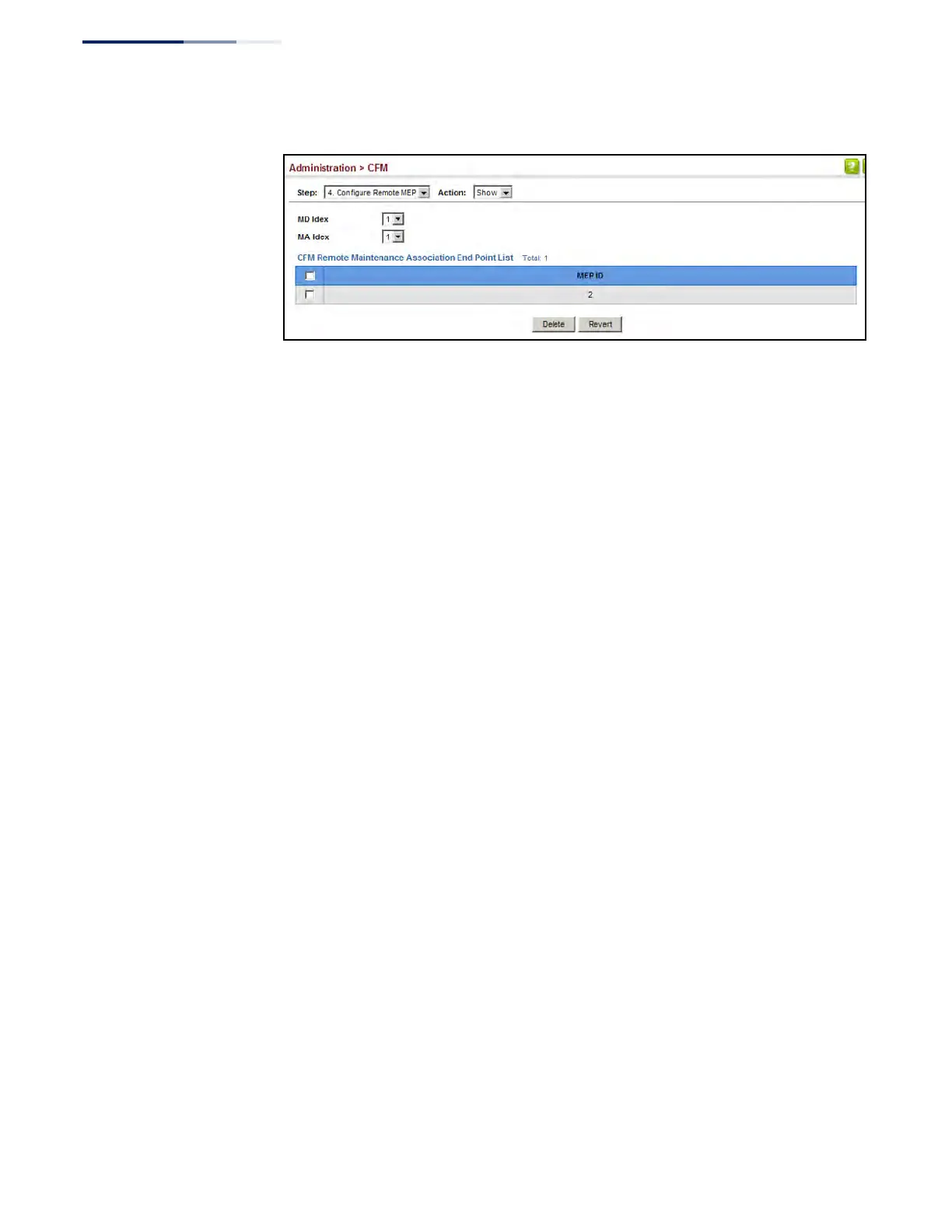Chapter 13
| Basic Administration Protocols
Connectivity Fault Management
– 508 –
Figure 315: Showing Remote Maintenance End Points
Transmitting Link
Trace Messages
Use the Administration > CFM (Transmit Link Trace) page to transmit link trace
messages (LTMs). These messages can isolate connectivity faults by tracing the
path through a network to the designated target node (i.e., a remote maintenance
end point).
Command Usage
◆ LTMs can be targeted to MEPs, not MIPs. Before sending a link trace message,
be sure you have configured the target MEP for the specified MA (see
"Configuring Remote Maintenance End Points").
◆ If MAC address of target MEP has not been learned by any local MEP, then the
link trace may fail. Use the Show Remote MEP page (see "Displaying
Remote MEPs") to verify that a MAC address has been learned for the target
MEP.
◆ LTMs are sent as multicast CFM frames, and forwarded from MIP to MIP, with
each MIP generating a link trace reply, up to the point at which the LTM reaches
its destination or can no longer be forwarded.
◆ LTMs are used to isolate faults. However, this task can be difficult in an Ethernet
environment, since each node is connected through multipoint links. Fault
isolation is even more challenging since the MAC address of the target node
can age out in several minutes. This can cause the traced path to vary over time,
or connectivity lost if faults cause the target MEP to be isolated from other
MEPs in an MA.
◆ When using the command line or web interface, the source MEP used by to
send a link trace message is chosen by the CFM protocol. However, when using
SNMP, the source MEP can be specified by the user.
◆ Parameters controlling the link trace cache, including operational state, entry
hold time, and maximum size can be configured on the Configure Global page
(see "Configuring Global Settings for CFM").

